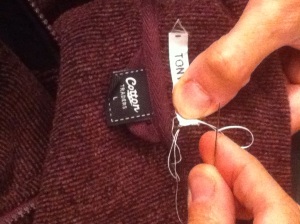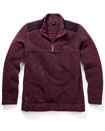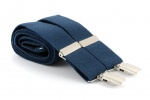One of the first things that hit me when Dad entered a care home was that he became ‘Tony’. His name was suddenly even more essential to his identity. Although he does still use his full name of Anthony; in everyday life, he seems more often to use its abbreviation. Not only has his name been important in building a sense of being known in his new surroundings but it has also been vital to hanging onto his clothes.
One of the stranger but inevitable aspects when a person moves out of his or her own home and into a care home with others is that, unless your laundry is clearly marked with your name, you are lucky to receive it back after washing. There have been several ‘hunts’ for missing items of Dad’s clothing because they haven’t been marked at all (duvet cover) or were marked with the number of the room of his last care home (vests) and therefore ended up in the wrong room of his current care home.
 Shortly after Dad arrived up here, Mark and I spent several evenings in front of the TV, sewing in name labels to most items of his clothing but a few items fell through the net. The name labels were a reminder of school, all over again, and they emphasised the institutional nature of being in a care home. We sewed in labels wherever we could but socks were a challenge. And this wasn’t just a problem for me. During the first raid on the laundry to find missing items of clothing, I encountered piles and piles of other people’s missing socks which lay around unclaimed. As Dad’s sock supply depleted, I grabbed a few of these pairs and told him they were his.
Shortly after Dad arrived up here, Mark and I spent several evenings in front of the TV, sewing in name labels to most items of his clothing but a few items fell through the net. The name labels were a reminder of school, all over again, and they emphasised the institutional nature of being in a care home. We sewed in labels wherever we could but socks were a challenge. And this wasn’t just a problem for me. During the first raid on the laundry to find missing items of clothing, I encountered piles and piles of other people’s missing socks which lay around unclaimed. As Dad’s sock supply depleted, I grabbed a few of these pairs and told him they were his.
Dad’s room, as the furthest on the corridor, has its own shower. This means that he also needs his own laundry basket which has to be regularly emptied. At first, this was part of a difficult and confusing process which upset him greatly – where did clothes go and would they arrive back? In fact, the whole issue of clothes – what to wear and when to change them was upsetting. Initially, the main focus of this distress over clothes centred around belts and their inadequacy. Dad had become very thin and has remained slim, despite eating well in the care home, which means that belts need extra holes and even then, don’t seem to keep his trousers up satisfactorily. After many frustrating attempts to fix this situation, a member of the care staff suggested that we try braces.
For many subsequent weeks, I became an avid collector of braces which did indeed seem to ease the difficulty Dad was facing. Imagine my delight when my brother found a couple of pairs of braces in Dad’s old wardrobe in his last flat and brought them up here to attach onto the trousers in his new wardrobe. Unexpectedly, I am now a braces expert and am still regularly called to come and attach them onto trousers which are just back from the laundry.
However, despite the wonderful discovery of braces, for several more subsequent weeks, clothes remained a major source of annoyance to Dad; mainly the actual challenge of dressing itself. As I mentioned in the introduction to this blog, he would frequently point to the wardrobe in utter confusion and I struggled to answer his existential question about the meaning of clothes.
To try and solve this, I consulted information about dementia. I haven’t mentioned this ‘D’ word before in this blog, even though it appears to me that campaigns to supports elderly people focus mainly on this issue. Even so, clearly not all elders have a form of dementia. I think that if there can be said to be a spectrum, Dad is probably on it but I haven’t found that information about this condition answer all my questions about his problems. Nevertheless, the clothes distress pointed at something beyond my knowledge of Dad’s previous sources of annoyance.
There is an abundance of advice available on the internet about enabling people with dementia to maintain independence with dressing. For example, the Alzheimers Society (available at: this link) offers tips which include: making fastenings easy, laying out clothes, coaching people to dress in small steps and also being tolerant of strange dress choices. This last issue is a difficult one – when Dad wears two shirts on top of each other or a thick sweater on a hot day, I struggle, but I’ve got better at accepting this, if he’s set on the choice and it doesn’t make him appear too unkempt.
When I was seeking advice about supporting Dad’s dressing, a few weeks ago, I came across a specific piece of advice (I can’t now remember where) that I thought might be the key to some of Dad’s problems. This related to the difficulty for some people (with dementia) with patterned clothing. I thought I might be onto something and was thinking about hiding any items of Dad’s clothing which sported bright and busy patterns. However, the day I arrived to find him with a striped t-shirt, checked over-shirt and paisley neck-tie, I abandoned this idea. So much for theories.
Nevertheless, there has been an ‘issue’ with clothing and getting on top of it has been a slow but steady process. Cravats have replaced ties, braces have replaced belts and velcro: zips and laces. Most importantly, Dad now has regular assistance with showering and dressing in the morning and better understands the laundry process whereby clothes disappear and, mostly, reappear. This week when Dad temporarily moved rooms, a lone sock was uncovered at the bottom of his drawer but this phenomenon is normal in most households, so to be expected. To hang onto his hankies, I take them home to launder myself and I also try and make sure that the clothes in his drawers are neatly folded.

Yesterday, Dad received a beautiful new plum sweat shirt from my brother and sister-in-law, similar to another of his favourites and in the same size – they had been searching for this for a while. As Dad struggled to put it over his head, I realised again how irksome dressing must be for him but managed to persuade him that the fit was good and that it would expand a bit with time; also that it looked great – so it went into his wardrobe. The timing of this gift is fortuitous, as he seems more able to accept the purpose of choosing from a variety of clothes. Despite the laundry challenge, this aspect of self-care has become easier and I’ve just remembered to bring the sweater home and get that name tag sewn in (see Mark’s handiwork in the photo above).



Pingback: The ‘D’ word | Caring for Dad
Can you still get braces? My Dad always wore them when we were kids but doesn’t seem to any more.
Carol.
LikeLike
Everything’s available on Amazon….
LikeLike